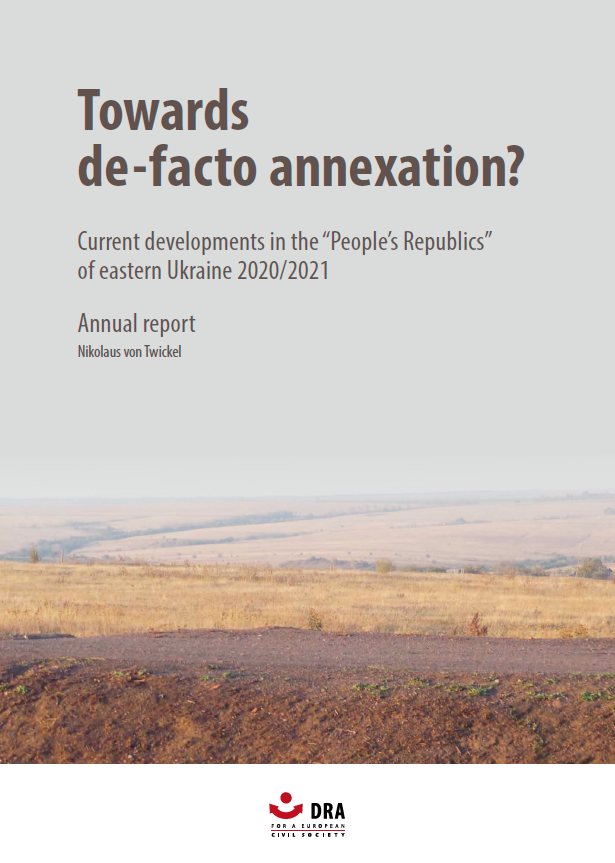The year 2020 in the Donbas was overshadowed by the COVID-19 pandemic, which by all accounts hit the “People’s Republics” hard but whose exact impact is hard to gauge, given the notorious secrecy of the separatist de facto authorities. More discernible was the pandemic’s economic effect which resulted in what is probably the severest downturn since 2014. However, despite serious labour unrest, growing wage arrears and the exodus of skilled workers, separatist leaders faced no serious challenges to their rule. Protected by a ruthless security apparatus, they continued to implement policies that deepen the rift between the separatist entities and the rest of Ukraine. There also was almost no noticeable effect from the ouster of Kremlin aide Vladislav Surkov, whose responsibilities for eastern Ukraine were taken over by his rival Dmitry Kozak in February. Surkov is widely believed to have been the key Russian official who set up and ran the “People’s Republics” since 2014. While security significantly improved thanks to the adherence to a renewed ceasefire brokered on 22 July, the overall situation remained volatile as some 80,000 troops remain stationed on both sides of the Contact Line. The massive deployment of Russian troops along the Ukrainian border and in Crimea in spring 2021 reminded the world that military escalation is also possible. The human rights situation inside the “People’s Republics” remained dismal – both critics and public supporters of the separatists risk detention and torture – and access to justice is practically not existent. Another serious problem that worsened in 2020 is the environmental crisis posed by the flooding of unused coalmines after the separatist stopped pumping water out of them.
This year’s annual report covers the year 2020 and the first three months of 2021.


